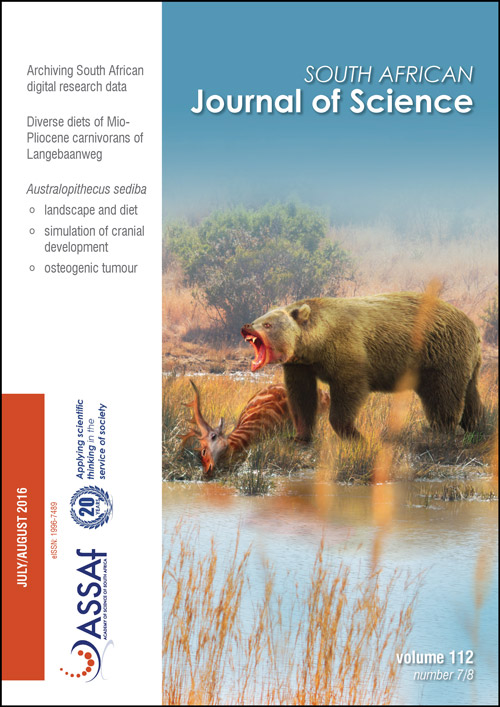Estimated abundance and diversity of heterotrophic protists in South African biocrusts
DOI:
https://doi.org/10.17159/sajs.2016/20150302Keywords:
biological soil crusts, biodiversity, protozoa, cryptogams, cyanobacteriaAbstract
Biological soil crusts (biocrusts) occur widely in the uppermost millimeters of the soil in arid and semi-arid systems. Worldwide they cover large terrestrial areas and play a major role in the global terrestrial carbon and nitrogen cycles. However, knowledge of the microbial decomposer foodwebs within biocrusts is particularly scarce. Heterotrophic protists in soil are predominantly bacterivores, and because of their high biomass compared with other soil fauna and fast turnover rates, protists are considered an important factor for soil nutrient cycling and energy fluxes. Thus, knowledge of their biodiversity, abundance and functional roles is important to understand soil ecosystem functions. We investigated the diversity and abundance of heterotrophic soil protists in different types of biocrusts from the Succulent Karoo, South Africa. With an overall diversity of 23 distinct morphotypes, soil protist biodiversity was shown to be high. The most abundant groups were Spumella-like chrysomonads, gliding bodonids, glissomonads and heteroloboseans. Protist abundance was highly variable among samples. The abundance and diversity did not differ significantly among different types of biocrusts, indicating that microscale differences, but not macroscopic soil crust builders (e.g. cyanobacteria, lichens and bryophytes), have a major impact on the protist community.
Published
Issue
Section
License

All articles are published under a Creative Commons Attribution 4.0 International Licence
Copyright is retained by the authors. Readers are welcome to reproduce, share and adapt the content without permission provided the source is attributed.
Disclaimer: The publisher and editors accept no responsibility for statements made by the authors
How to Cite
- Abstract 577
- PDF 531
- EPUB 206
- XML 256












.png)